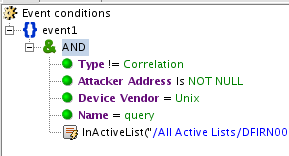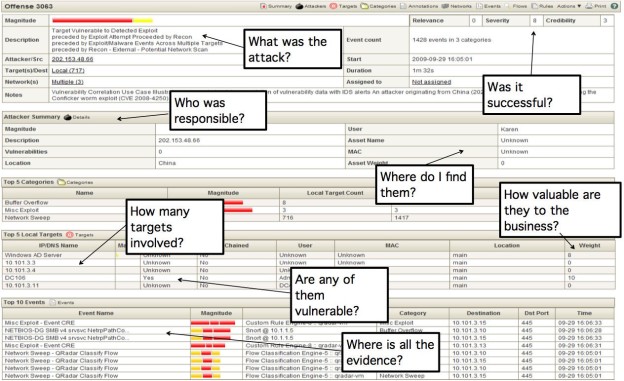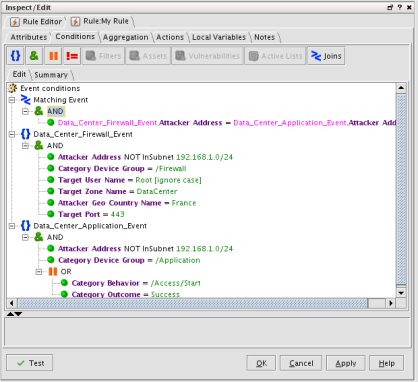Use Case 1
Detection of Possible Brute Force Attack
With the evolution of faster
and more efficient password cracking tools, brute force attacks are on a high
against the services of an organization. As a best practice, every organization
should configure logging practices for security events such as invalid number
of login attempts, any modification to system files, etc., so that any possible
attack underway will get noticed and treated before the attack succeeds.
Organizations generally apply these security policies via a Group Policy Object
(GPO) to all the hosts in their network.
To check for brute force
pattern, I have enabled auditing on logon events in the Local Security Policy
and I will be feeding my System Win:Security logs to Splunk to check for a
brute force pattern against local login attempts.
Note: EventCode: 4625 is used
in new versions of the Windows family like Win 7. In older versions, the event
code for invalid login attempts is 675, 529.
After this, I log off my
machine, and entered the password incorrectly three times in attempt to impersonate
a brute force attack.
Since these activities gets
logged in Win:Security, which in turn is feeding Splunk in real time, an alert
will be created in Splunk, giving analysts an incident to investigate and take
responsive actions, like changing the firewall policy to blacklist that IP.
Use Case 2
Detection of Insider Threat
Reportedly,
more than 30 percent of attacks are from malicious insiders in any
organization. Therefore, every organization must keep the same level of
security policies for insiders also.
Acceptable
Use Monitoring (AUP)
Acceptable Use Monitoring
covers a basic questions, i.e. what resource is being accessed by whom and
when. Organizations generally publish policies for users to understand how they
can use the organization’s resources in the best way. Organizations should
develop a baseline document to set up threshold limits, critical resources
information, user roles, and policies, and use that baseline document to
monitor user activity, even after business hours, with the help of the SIEM
solution.
For example, the below
illustration is of logging a user activity on an object. For demonstrative
purposes, I have created a file named “Test_Access” on my system. Auditing on
object access is enabled in my system, like below in the Local Security Policy.
Enabling auditing on security
policies is not enough, and now I have to enable the auditing on the respective
file, also named “Test_Access” in this case. I have enabled auditing for Group
Name –”Everyone” on this file. Organizations should fingerprint all the
sensitive files and corresponding privileges and user group access on them.
For demonstrative purposes, I
have selected all the object properties to be audited.
After this, I accessed the
“Test_Access” file, which generates an event in Security logs with Event ID
4663, giving user name, action performed, time it was accessed, etc. This
useful information can be fed into the SIEM solution through security logs to
detect any unauthorized or suspicious object access.
Organizations should develop
fingerprints on all the sensitive documents, files and folders, and feed all
this information to respective security solutions such as data leakage
prevention solutions, application logs, WAF, etc. into the SIEM solution to
detect a potential insider threat. Organizations can develop the below use
cases in the SIEM solution under AUP.
· Top malicious DNS requests from user.
· Incidents from users reported at DLP, spam filtering, web
proxy, etc.
· Transmission of sensitive data in plain text.
· 3rd party
users network resource access.
· Resource access outside business hours.
· Sensitive resource access failure by user.
· Privileged user access by resource criticality, access
failure, etc.
Use Case 3
Application Defense Check
Besides network, perimeter,
and end point security, organizations must develop security measures to protect
applications. With attacks like SQL injection, Cross site scripting (XSS),
Buffer overflow, and insecure direct object references, organizations have
adopted security measures like secure coding practices, use of Web Application
Firewall (WAF) which can inspect traffic at layer 7 (Application layer) against
a signature, pattern based rules, etc. Along with the log of applications,
organizations must also feed SIEM with logs of technologies such as WAF, which
can correlate among various security incidents to detect a potential web
application attack. One of the very important points to check for in a
sensitive application is that the application should encrypt the sensitive
information like PII in the logs as well, as these logs will be fed into SIEM,
and if unencrypted, sensitive information could be exposed in SIEM.
Organizations must also
develop a strategy to secure the operating system (OS) platform onto which the
application is hosted. OS as well as application performance logging features
must also be enabled. Below are some of the use cases that can be implemented
in SIEM to check Application defense.
· Top Web application Attacks per server.
· Malicious SQL commands issued by administrator.
· Applications suspicious performance indicator, resource
utilization vector.
· Application Platform (OS) patch-related status.
· Web attacks post configuration changed on applications.
Use Case 4
Suspicious Behavior of Log Source
Expected Host/Log Source Not Reporting
Log sources are the feeds for
any SIEM solution. Most of the SIEM solution these days comes with an
agent-manager deployment model, which means that on all the log sources, light
weight SIEM agent software is installed to collect logs and pass them to a
manager for analysis. An attacker, after gaining control over a compromised
machine/account, tends to stop all such agent services, so that their
unauthorized and illegitimate behavior goes unnoticed.
To counter such malformed
actions, SIEM should be configured to raise an alert if a host stops forwarding
logs after a threshold limit. For example, the below search query (SPL) in
Splunk will raise an alert if a host has not forwarded the logs for more than
one hour.
As soon as an alert is
received with the IP address of the machin under attack, the Incident Response
Team (IRT) can start mitigating this issue.
Unexpected Events Per Second (EPS) from Log Sources
Another common pattern found
among compromised log sources is that attackers tends to change the
configuration files of endpoint agents installed and forward a lot of
irrelevant files to the SIEM manager, causing a bandwidth choke between the
endpoint agent and manager. This affects the performance of real time searches
configured, storage capacity of underlying index for storing logs, etc.
Organizations must develop a use case to handle this suspicious behavior of log
sources. For example, below is the search (SPL) created in Splunk which can
detect unusual forwarding of events from log sources in one day.
An alert will be configured with it to
get triggered whenever the amount of EPS from a log source exceeds a threshold
value for the IRT team to investigate.
Use Case 5
Malware
Check
These days, organizations
believe in protecting their network end to end, i.e. right from their network
perimeter with devices like firewall, Network Intrusion Prevention System
(NIPS), till the endpoints hosts with security features like antivirus and Host
Intrusion Prevention System (HIPS), but most organizations collect reports of
security incidents from these security products in a standalone mode, which
brings problem like false positives, etc.
Correlation logic is the
backbone of every SIEM solution, and correlation is more effective when it is
built over the output from disparate log sources. For example, an organization
can correlate various security events like unusual port activities in firewall,
suspicious DNS requests, warnings from Web Application firewall and IDS/IPS,
threats recognized from antivirus, HIPS, etc. to detect a potential threat.
Organizations can make following sub-use case under this category.
· Unusual network traffic spikes to and from sources.
· Endpoints with maximum number of malware threats.
· Top trends of malware observed; detected, prevented,
mitigated.
· Brute force pattern check on Bastion host.
Use Case 6
Detection of Anomalous Ports, Services and Unpatched
Hosts/Network Devices
Hosts or network devices
usually get exploited because they often left unhardened, unpatched.
Organizations first must develop a baseline hardening guideline that includes
rules for all required ports and services rules as per business needs, in
addition to best practices like “default deny-all”.
For example, to check for the
services being started, systems logs from event-viewer must be fed into the
SIEM solution, and a corresponding correlation search must be created against
the source name of “Service Control Manager” to detect what anomalous services
got started or stopped.
Organizations can also check
out for vulnerable ports. Services can be exposed by deploying a vulnerability
manager and running a regular scan on the network. The report can be fed into
the SIEM solution to get a more comprehensive report encompassing risk rate of
the machines in the network. Some use cases that an organization can build from
reports are:
· Top vulnerabilities detected in network.
· Most vulnerable hosts in the network with highest
vulnerabilities.
Another important aspect that
an organization should constantly monitor as part of the SIEM process is that
all clients or endpoints are properly patched with software updates and feed
the client patch status information into the SIEM solution. There are various
ways an organization can plan out for this check.
· Organizations can plan out to check the patch–related
status by deploying a Vulnerability Manager and running a regular scan to check
out for unpatched endpoints.
· Organizations can deploy a “centralized update manager”
like WSUS and feed the results of the updated status of endpoints into the SIEM
solution or can feed the logs of the manager endpoint deployed on endpoints
directly into SIEM to detect all unpatched endpoints in the network.
CONCLUSION
Above use-cases are not a
comprehensive SIEM security check list, but in order to have success with SIEM,
the above listed use cases must be implemented at the minimum on every
organization’s check list.


